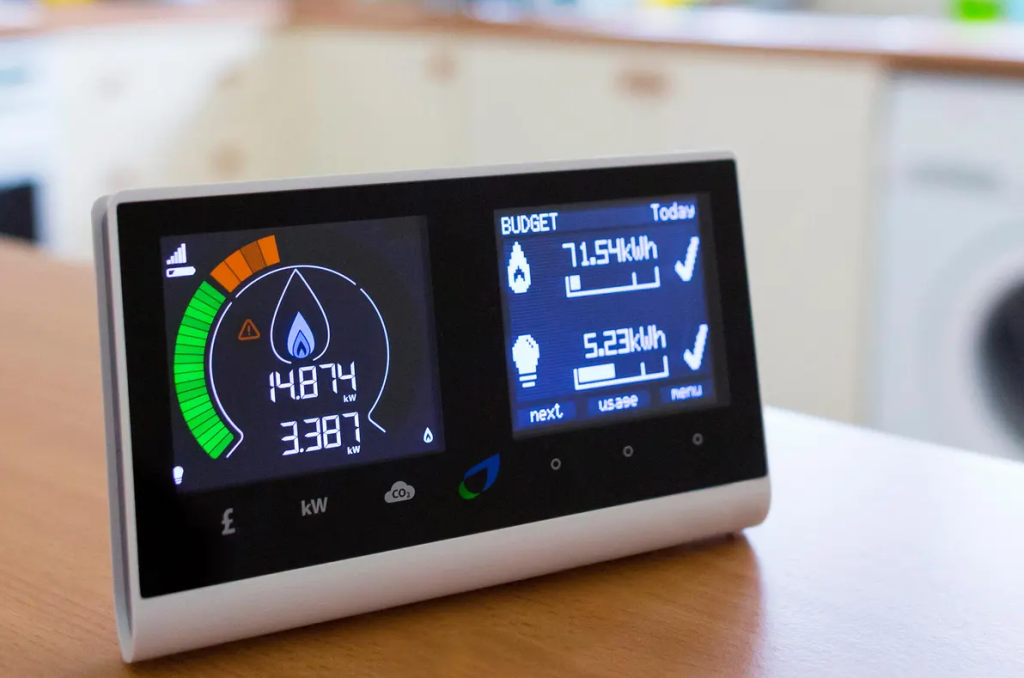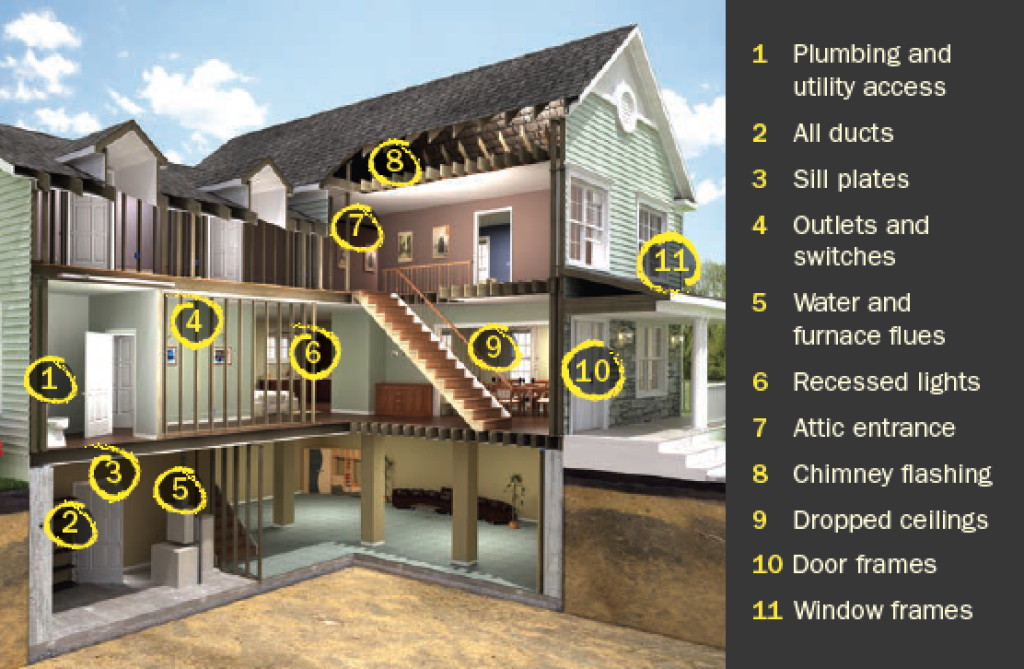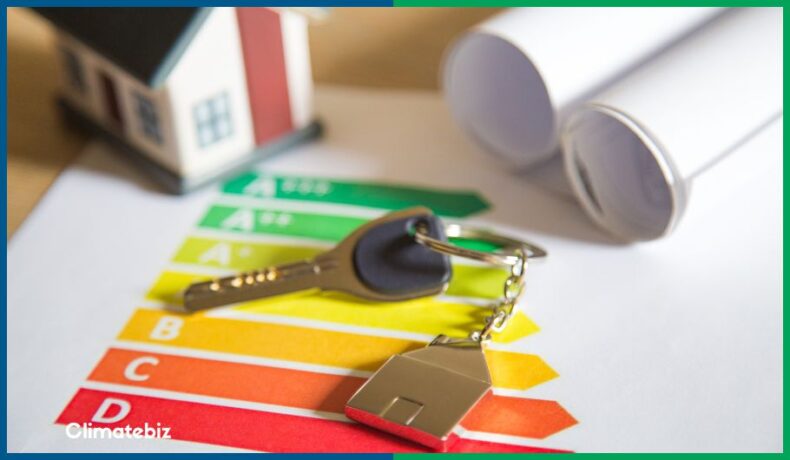Our homes are becoming smarter by the day as we bring in new and exciting technologies. Unfortunately, while these appliances and electronics make our lives easier, they increase our electrical consumption. So, with rising electricity costs, it’s fair to say that now’s a good time to investigate ways to save electricity in your home.
According to the U.S. Energy Information Agency, residential electrical prices rose 8% in 2022, from $0.137 to $0.148. They also estimate that American households can expect to see a further 3% increase to $0.153 in 2025.
Additionally, the average annual consumption for an American household in 2021 was 10,632-kilowatt hours (kWh). In 2025, that’s an estimated annual electricity bill of $1,595.
Fortunately, new energy-efficient appliances have become increasingly available as we move towards a greener future, allowing us to discover new ways to cut electrical costs each year.
Our 15 ways of saving electricity in your home will summarise the best methods of cutting costs, saving you money, and aiding the environment.
Table of Contents
How to Save Electricity in Your Home
According to the International Energy Agency, the global electricity demand will continue to grow by an average of 2.7% per year. While this may seem like a marginal increase, it’s worth remembering that, in the U.S. alone, 73% of greenhouse gas emission stems from burning fossil fuels used to generate energy. In short, as the demand for electrical energy increases, so will GHG emissions.
Awareness of the bi-products of energy generation and their effect on the environment is more than enough incentive to curb electrical usage in your home. So, what is the best way to save electricity? Moreover, what is electrical consumption?
Understanding Electrical Usage in Your Home
Before we go any further, we need to clarify the difference between electricity consumption and electrical demand. Knowing the difference will help you understand what applications consume the most electricity and the rate at which they consume it too.
Electrical demand, represented in kilowatts (kW), is the rate at which an appliance uses electricity at a required output rating.
Electrical consumption, represented in kilowatt-hours (kWh), is the amount of electrical energy an appliance uses over a specific time.
For Example
Imagine looking at a lightbulb with the label, “energy used: 9 watts.”
The energy used refers to the lightbulb’s electrical demand — it needs 9 watts to operate. At that wattage, its electrical consumption will be 9 kWh. So, if the lightbulb runs for three hours, it will consume 27 watts.
The ENERGY STAR Label

Source: ENERGY STAR
The ENERGY STAR Label indicates energy efficiency supported by the U.S. Department of Energy in partnership with the Environmental Protection Agency (EPA). The label aims to provide detailed and unbiased information on an energy-efficient product.
To be ENERGY STAR certified, the product must meet strict and specific requirements relating to energy efficiency. For example, all certified d products must exceed the federal minimum efficiency standards.
You can find out more about the ENERGY STAR Label on their official website and view 2022 most efficient products here.
15 Ways to Save Electricity in Your Home
There are multiple ways to save electricity in your home, from simply turning off your lights to implementing timers on your switches. In summary, here are 15 ways you can save electricity:
- Smart meters
- Energy-efficient dishwasher
- Use more cold water
- Energy-efficient refrigerator
- Read the Energy Guide label
- Energy-efficient washing machine
- Energy-efficient dryer
- Switch off appliances not in use
- Choose smart power strips
- Home cooling
- Efficient home heating methods
- ENERGY STAR streaming equipment
- Swap light bulbs for LED lights
- More lights, smaller size
- Insulation and air sealing your home
15 Ways to Save Electricity
Here are 15 ways that you can save electricity in your home:
1. Smart Meters
A smart meter records and displays your home’s consumption data; however, it connects remotely to your utilities.
These meters are beneficial as they allow you to measure and control your consumption easily, showing you how much electricity you use.
With this data, you can make electrically conscious decisions like shifting your power usage to off-peak periods.

Source: The Guardian
One of the benefits associated with smart meters is that they offer customer portals online or through an app. This portal allows you to watch real-time usage records and see emerging trends.
Sensus is one of the leading smart meter companies in the world (2022). The company specializes in communication technologies and smart meters that help you make timely decisions, with their meters helping optimize your water, gas, and electricity consumption.
2. Energy-Efficient Dishwasher
ENERGY STAR certified Dishwashers use less water and electricity than standard models. Some of the most efficient dishwasher models only consume 199 kWh/year and 3.2 gallons of water per cycle, making them 35% more efficient than U.S. industry standard models (307 kWh/year.
To increase efficiency further, scrape food off your plate instead of rinsing them. This won’t save you electricity, but it can save up to 8,000 gallons of water per year. Don’t worry; dishwashers reach high enough temperatures to disinfect all your crockery and cutlery.
To take things one step further, consider lowering your dishwasher temperate to 120ºF to save electricity. It’s also a good idea to let your dishes air dry instead of using your dishwasher’s drying function.
3. Use More Cold Water
Did you know that every time your lift your faucet lever in the middle section, it causes your geyser to pull more electricity? The faucet uses hot water unless you set your tap to cold.
Water heating is your home’s second largest electrical expense and accounts for 18% of your total usage. For example, a 52-gallon geyser for a household of four uses 14 kW of electricity per day.
Regarding electrical water heaters, insulating your pipes and the underside of your geyser can save 4% to 9% on energy usage. You can also save electricity by setting your water heater thermostat to 120ºF, considered a safer temperature.
4. Energy-Efficient Refrigerator
If you have a dinosaur of a fridge (or one that’s at least a decade old), it’s time to upgrade to a new efficient refrigerator. Top-mounted freezer models are the most efficient. Additionally, 16-20 cubic feet fridges are usually the most efficient relative to their size.
A STAR ENERGY-certified 20.8 cubic ft refrigerator has an annual consumption of 472 kWh/year. In contrast, an older 20 cubic ft fridge consumes 1,700 kWh/year.
Further measures to reduce electrical consumption include setting your fridge temperature between 35ºF and 38ºF and ensuring your fridge is airtight to prevent the cold from escaping. Finally, keep your fridge about an inch away from the wall.
5. Read The EnergyGuide Label

Source: ResearchGate
According to the U.S. Federal Trade Commission, EnergyGuide Labels help consumers shop for energy-efficient appliances. The labels allow you to compare an appliance with similar models. Additionally, the label provides information such as energy consumption and the cost of operating the appliance during its lifespan.
Here are more features that the EnergyGuide Label has to offer:
- The appliance’s key features and similar models are within the same price range.
- The estimated yearly operating cost is based on the national cost of electricity (14.9 cents per kilowatt hour).
- The appliance’s annual electrical consumption
Reading the EnergyGuide Label is one of the best ways to save electricity in your home. It allows you to make informed decisions when comparing different models.
6. Energy-Efficient Washing Machine
Another energy-hungry culprit is the washing machine.
Since 1990, clothes washing machines have seen an impressive 70% drop in energy usage. In addition, the most efficient models use 25% less electricity and 33% less water than standard models.
An ENERGY STAR certified 5 cubic foot clothes washer consumes 105 kWh/year and around 4278 gallons/year.
Heating the water uses the most electricity, so opting for warm or cold washes can cut that load’s consumption by half.
7. Energy-Efficient Dryer
Clothes dryers are right up there with washing machines — they devour electricity.
An efficient clothes dryer uses 20% less energy than a standard dryer (roughly 217 kWh/year for a 4.5 cu-ft drum).
Today, most efficient dryers have moisture senses that adjust the heat used. So the less heat used to dry your clothes, the less electricity the dryer will consume.
Alternatively, consider air-drying clothes instead of using a dryer. It may be a little more inconvenient but it dramatically curbs your total electrical consumption.
Switch To Gas Or Heat Pump Dryers
Gas dryers cost less to operate depending on your local gas costs. In addition, heat pump dryers save 20% to 60% more energy than standard dryers.
Heat pump dryers work like air-source heat pumps, drawing ambient air, heating it, and recirculating it through the dryer. They’re efficient and have the greatest potential for energy saving. The only downside is that you must manually drain the water from the dryer.
8. Switch Off Appliances Not In Use
Switching off electronics has been a way of saving electricity throughout homes for years. While it may seem like old advice, it’s no less valuable.
However, as technology advances, new ways to save power have emerged. For example, turning down the brightness on your monitor or T.V. can save up to 30% of your electrical consumption. Additionally, ensuring that your computers and T.V. automatically switch into sleep mode is good electricity-saving practice.
Other tips include ensuring that no computer games or programs prevent your computer from entering sleep mode and unplugging chargers.
Finally, installing timers on plugs that you use periodically may be worthwhile. For instance, plug your computer into a plug with a timer. Your P.C. plug will turn on at a specific time and turn off as programmed.
9. Choose Smart Power Strips
Advanced power strips are a great way to save electricity in your home. Smart power strips prevent electronics from using power when they aren’t running.
These strips have built-in timers and activity monitors; this makes saving electricity easier than ever. They can save between 5% to 10% of your electrical consumption by preventing electronics from drawing unnecessary power.
10. Home Cooling
Ensuring you use efficient cooling methods is one of the best ways to save electricity in your home. For example, air conditioner units can pull as much as 3 kW per hour. While using energy-efficient air conditioners will help curve electrical consumption, other cooling options are available.
Ceiling fans, in particular, offer a great alternative to air conditioners. They create a wind chill effect that cools you down and allows you to turn your thermostat a few degrees.
Additionally, set the thermostat to a comfortable temperature when you’re home or awake in the summer. Then, while you’re asleep or away from home, raise the temperature to preserve electricity.
If you have an air conditioner installed, ensure that your clean and replace the air conditioner filters when necessary; this is usually once a month unless stated otherwise by the manufacturer.
Lastly, keep your curtains or blinds half-closed during the day to block the sun’s heat as much as possible.
11. Efficient Home Heating Methods
Heating and cooling methods are the largest electricity consumers in your home, contributing around 42% of your total energy usage. Curbing your dependency on these cooling and heating appliances is a great way to save electricity.
If your air conditioner is older than a decade or your boiler/furnace is more than 15 years old, it’s time to upgrade. Fortunately, there are various heating methods to choose from that are energy-efficient and cost-effective. These include:
- furnaces
- boilers
- heat pumps
- wood and pellet-fuel stoves
- active solar heating
- passive solar heating
If you choose a furnace or boiler, purchase a high annual fuel utilization efficiency (AFUE) model. This is a measurement of how efficient the appliance is. Additionally, ensure to stay on top of maintenance, replacing the furnace filters once a month.
12. ENERGY STAR Streaming Equipment
A home with two set-top boxes consumes almost twice the amount of electricity than an efficient fridge would. For this reason, opting for certified streaming appliances is one of the best ways to reduce electricity consumption.
Streaming content with STAR ENERGY certification can save around 30% of the electricity used. That’s why it’s important to choose smaller devices relative to the number of people watching. Turning your streaming box off when it’s not in use is also crucial.
Lastly, avoid using game consoles as streaming devices. They use 10 times more power than a laptop, tablet, or media box. For instance, while an Apple T.V. 4K consumes 3.03-5.58 kWh, a PS4 consumes 90-150 kWh.
| Gaming Console | Consumption (W) | Streaming Device | Consumption (W) |
|---|---|---|---|
| PS4 | 90-150 | Apple T.V. 4K | 3.03-5.58 |
| Xbox One X | 65-180 | Chromecast Ultra | 1.5-2.0 |
| Xbox One | 70-120 | Fire T.V. 4K | 4 |
13. Swap Light Bulbs For LED Lights
The average American household has up to 70 light bulbs, with a demand of roughly 4.2kW.
LED (light-emitting diodes) use 90% less electricity than incandescent lights. So, believe it or not, switching between these lights can save $55 in electrical costs over the light bulb’s lifespan.
Another factor to look at is the lumens produced by the light bulb. For example, you may be used to looking at watts to determine the brightness; however, lumens represent more accurately. This is because an object’s brightness is measured in lumens — the higher the value, the brighter the light bulb.
Essentially, light bulbs with low wattage and higher lumens are more efficient. If you’re replacing a 100-watt light bulb, look for an LED bulb with about 1,600 lumens.
Choose Energy Efficient Light Fixtures
Efficient light fittings only increase the efficiency of energy-saving light bulbs. For example, ENERGY STAR light fixtures use 75% less electricity than standard fixtures and generate less heat.
14. More Lights, Smaller Size
Buying more lights may seem counterproductive. However, purchasing small, energy-efficient lights for different tasks saves more electricity than buying larger room lights.
For example, buying standing lamps for reading allows you to turn all your other lights off except the one you’re using. Other task-based lights include desk lamps, table lamps, etc.
15. Insulation And Air Sealing Your Home

Source: U.S. Department of Energy
If you’ve been following our eco-home articles, you’ve probably realized the importance of insulation. By installing insulation along all outside-facing elements of your home (the building envelope), you reduce heat flow which increases the efficiency of your heating/cooling appliances.
Additionally, ensuring you have the proper insulation installed reduces your electrical demand and improves the thermal comfort of your home.
Lastly, having no air leaks in your home’s envelope and that your home is correctly insulated is vital to saving electricity. In fact, sealing all air leaks can save 20% of your heating and cooling consumption.
5 Appliances That Use The Most Electricity In Your Home
Here are the 5 biggest consumers of residential electricity in 2021, according to the U.S. Energy Information Administration (EIA):
| Sector | Appliances | Consumption (%) |
|---|---|---|
| Heating/Cooling Appliances | Air Conditioner, Space Heaters | 42 |
| Other Uses | Electronic Devices, Heating Elements | 26.2 |
| Water Heating | Water Heaters/Geysers | 13.6 |
| Refrigeration | Fridges, Freezers | 4.9 |
| Clothes Dryers and Washers | Washing Machines, Dryers | 3.7 |
Here is the same information from the table above presented in a chart:
To compare, look at this graph showing residential electricity consumption per household in 2016, courtesy of the Department of Energy in the U.S.:
It’s difficult to list specific appliances because of their various efficiencies and sizes. Alternatively, listing the categories these products fall into paints a clearer picture of what sectors of our homes consume the most electricity.
Knowing what appliances use the most electricity indicates where you should start looking when searching for ways to save electricity in your home.
Final Thoughts
Switching to energy-efficient appliances is vital to saving electricity in your home. As a result, these products are often marked with ENERGY STAR labels and tagged with EnergyGuide labels. Using these two indicators, you’ll get a clear idea of how efficient the product is and how it compares to other models.
To reduce electrical consumption, concentrate on the larger consumption sections – heating/cooling appliances, water heaters, electronic devices, and refrigerators. Your energy consumption will surely drop by tackling these sectors using the tips listed above.
Leave a comment below if you have any further questions, and one of our experts will get back to you. Alternatively, you can start a conversation with us on Twitter.

